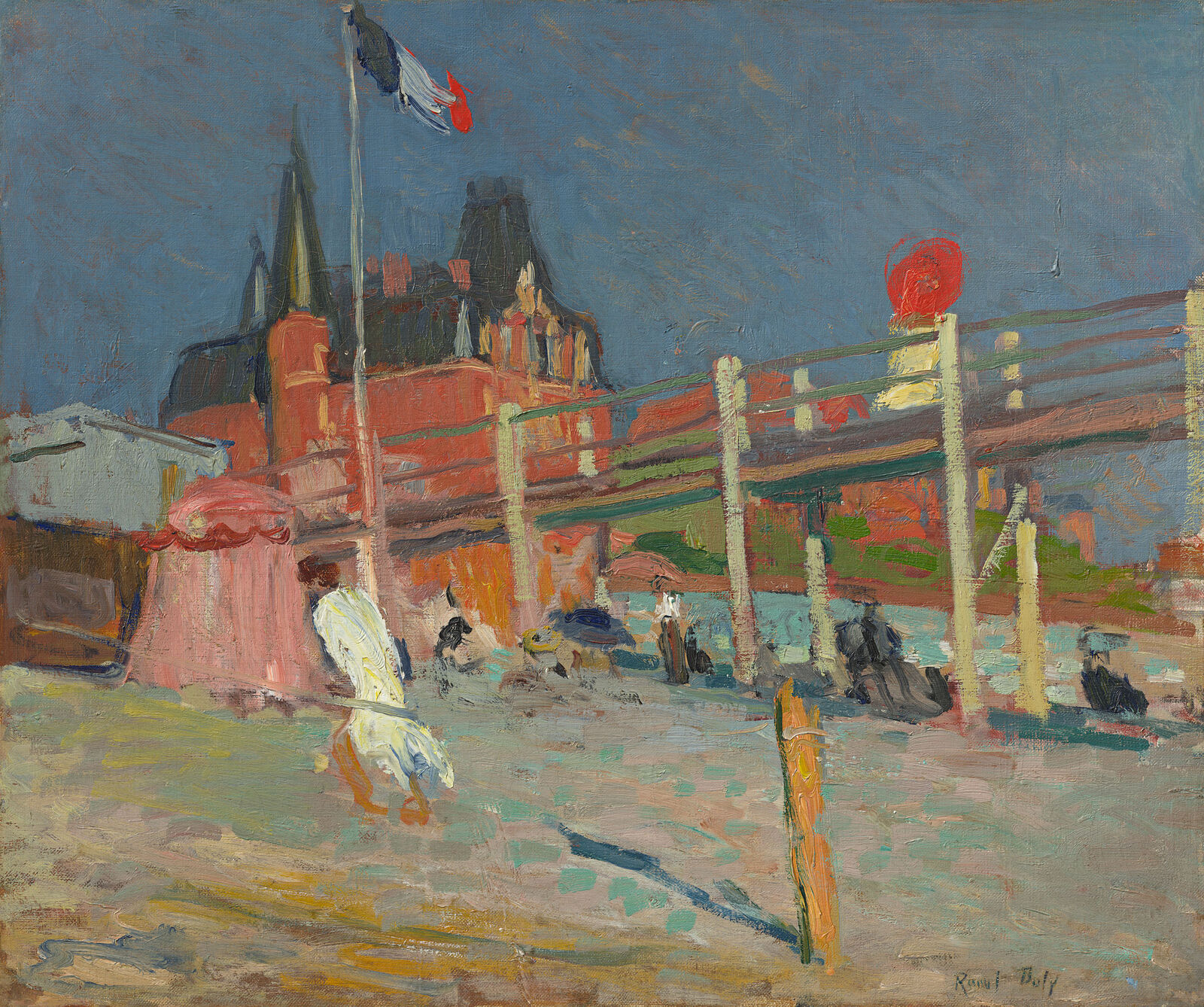
Laura Junger
Raoul Dufy
Born 1877 in Le Havre
Died 1953 in Forcalquier
Dufy’s emblematic abstraction, his delicate, watercolor-like use of paint, and his carefree motifs are reminiscent of naive painting.

David von Becker
Dufy attended drawing school in Le Havre beginning in 1889, where he befriended Friesz. In 1900, he went to Paris and studied at the École des Beaux-Arts. After encountering the brilliantly colored painting of the Fauves at the Salon d’Automne in 1905, Dufy adopted a freer approach to color.
The influence of the Cézanne retrospective of 1907 as well as his exposure to Cubism led him to clarify his compositions. After World War I, he turned his attention to the leisure activities of the upper class, painting orchestra scenes and horse races in Paris and regattas and promenades on the French Riviera. In 1935, Dufy began using a new kind of oil paint that imbued the medium with the lightness of watercolor.
Dufy in the collection
Raoul Dufy is represented with three works in the Hasso Plattner Collection, on view in the Museum Barberini as a permanent loan from the Hasso Plattner Foundation. With over 110 paintings of French Impressionism and Post-Impressionism, including masterpieces by Claude Monet, Pierre-Auguste Renoir, Berthe Morisot, Gustave Caillebotte, and Paul Signac, the museum in Potsdam is one of the most important centers of Impressionist landscape painting in the world.






